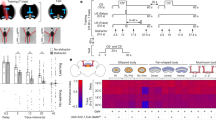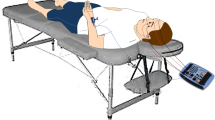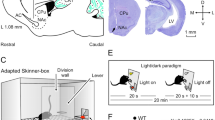Abstract
Pavlovian trace conditioning depends on the temporal gap between the conditioned and unconditioned stimuli. It requires, in mammals, functional medial temporal lobe structures and, in humans, explicit knowledge of the temporal contingency. It is therefore considered to be a plausible objective test to assess awareness without relying on explicit reports. We found that individuals with disorders of consciousness (DOCs), despite being unable to report awareness explicitly, were able to learn this procedure. Learning was specific and showed an anticipatory electromyographic response to the aversive conditioning stimulus, which was substantially stronger than to the control stimulus and was augmented as the aversive stimulus approached. The amount of learning correlated with the degree of cortical atrophy and was a good indicator of recovery. None of these effects were observed in control subjects under the effect of anesthesia (propofol). Our results suggest that individuals with DOCs might have partially preserved conscious processing, which cannot be mediated by explicit reports and is not detected by behavioral assessment.
This is a preview of subscription content, access via your institution
Access options
Subscribe to this journal
Receive 12 print issues and online access
$209.00 per year
only $17.42 per issue
Buy this article
- Purchase on Springer Link
- Instant access to full article PDF
Prices may be subject to local taxes which are calculated during checkout






Similar content being viewed by others
References
Koch, C. The Quest for Consciousness: A Neurobiological Approach (Roberts and Company, Englewood, Colorado, 2004).
Laureys, S. The neural correlate of (un)awareness: lessons from the vegetative state. Trends Cogn. Sci. 9, 556–559 (2005).
Clark, R.E. & Squire, L.R. Classical conditioning and brain systems: the role of awareness. Science 280, 77–81 (1998).
Clark, R.E., Manns, J.R. & Squire, L.R. Trace and delay eyeblink conditioning: contrasting phenomena of declarative and nondeclarative memory. Psychol. Sci. 12, 304–308 (2001).
Knight, D.C., Cheng, D.T., Smith, C.N., Stein, E.A. & Helmstetter, F.J. Neural substrates mediating human delay and trace fear conditioning. J. Neurosci. 24, 218–228 (2004).
McGlinchey–Berroth, R., Carrillo, M.C., Gabrieli, J.D., Brawn, C.M. & Disterhoft, J.F. Impaired trace eyeblink conditioning in bilateral, medial-temporal lobe amnesia. Behav. Neurosci. 111, 873–882 (1997).
Clark, R.E., Manns, J.R. & Squire, L.R. Classical conditioning, awareness and brain systems. Trends Cogn. Sci. 6, 524–531 (2002).
Dawson, M.E. & Furedy, J.J. The role of awareness in human differential autonomic classical conditioning: the necessary-gate hypothesis. Psychophysiology 13, 50–53 (1976).
Lovibond, P.F. & Shanks, D.R. The role of awareness in Pavlovian conditioning: empirical evidence and theoretical implications. J. Exp. Psychol. Anim. Behav. Process. 28, 3–26 (2002).
Jennett, B. Thirty years of the vegetative state: clinical, ethical and legal problems. Prog. Brain Res. 150, 537–543 (2005).
Jennett, B. & Plum, F. Persistent vegetative state after brain damage. A syndrome in search of a name. Lancet 299, 734–737 (1972).
Royal College of Physicians. The Vegetative State: Guidance on Diagnosis and Management (Royal College of Physicians, London, 2003).
Multi–Society Task Force on PVS. Medical aspects of the persistent vegetative state. N. Engl. J. Med. 330, 1572–1579 (1994).
Giacino, J.T. et al. The minimally conscious state: definition and diagnostic criteria. Neurology 58, 349–353 (2002).
Baars, B.J. A Cognitive Theory of Consciousness (Cambridge University Press, New York, 1988).
Dehaene, S. & Naccache, L. Towards a cognitive neuroscience of consciousness: basic evidence and a workspace framework. Cognition 79, 1–37 (2001).
Boly, M. et al. Auditory processing in severely brain injured patients: differences between the minimally conscious state and the persistent vegetative state. Arch. Neurol. 61, 233–238 (2004).
Bekinschtein, T.A. et al. Neural signature of the conscious processing of auditory regularities. Proc. Natl. Acad. Sci. USA 106, 1672–1677 (2009).
Bekinschtein, T. et al. Emotion processing in the minimally conscious state. J. Neurol. Neurosurg. Psychiatry 75, 788 (2004).
Kotchoubey, B. et al. Information processing in severe disorders of consciousness: vegetative state and minimally conscious state. Clin. Neurophysiol. 116, 2441–2453 (2005).
Laureys, S. et al. Cerebral processing in the minimally conscious state. Neurology 63, 916–918 (2004).
Schiff, N.D. et al. fMRI reveals large-scale network activation in minimally conscious patients. Neurology 64, 514–523 (2005).
Schnakers, C. et al. Voluntary brain processing in disorders of consciousness. Neurology 71, 1614–1620 (2008).
Laureys, S. et al. Auditory processing in the vegetative state. Brain 123, 1589–1601 (2000).
Menon, D.K. et al. Cortical processing in persistent vegetative state. Wolfson Brain Imaging Centre Team. Lancet 352, 200 (1998).
Boly, M. et al. Perception of pain in the minimally conscious state with PET activation: an observational study. Lancet Neurol. 7, 1013–1020 (2008).
Coleman, M.R. et al. Do vegetative patients retain aspects of language comprehension? Evidence from fMRI. Brain 130, 2494–2507 (2007).
Owen, A.M. et al. Detecting awareness in the vegetative state. Science 313, 1402 (2006).
Alkire, M.T., Hudetz, A.G. & Tononi, G. Consciousness and anesthesia. Science 322, 876–880 (2008).
Tononi, G. & Edelman, G.M. Consciousness and complexity. Science 282, 1846–1851 (1998).
Manns, J.R., Clark, R.E. & Squire, L.R. Standard delay eyeblink classical conditioning is independent of awareness. J. Exp. Psychol. Anim. Behav. Process. 28, 32–37 (2002).
Veselis, R.A., Reinsel, R.A. & Feshchenko, V.A. Drug-induced amnesia is a separate phenomenon from sedation: electrophysiologic evidence. Anesthesiology 95, 896–907 (2001).
Boly, M. et al. When thoughts become action: an fMRI paradigm to study volitional brain activity in noncommunicative brain-injured patients. Neuroimage 36, 979–992 (2007).
Bekinschtein, T.A. Cognitive Processes in the Vegetative and Minimally Conscious State. (PhD thesis, Univ. Buenos Aires, 2006).
Carew, T.J., Hawkins, R.D. & Kandel, E.R. Differential classical conditioning of a defensive withdrawal reflex in Aplysia californica. Science 219, 397–400 (1983).
Morris, J.S., Ohman, A. & Dolan, R.J. Conscious and unconscious emotional learning in the human amygdala. Nature 393, 467–470 (1998).
Öhman, A. & Soares, J.J. Emotional conditioning to masked stimuli: expectancies for aversive outcomes following nonrecognized fear-relevant stimuli. J. Exp. Psychol. Gen. 127, 69–82 (1998).
Carter, R.M., O'Doherty, J.P., Seymour, B., Koch, C. & Dolan, R.J. Contingency awareness in human aversive conditioning involves the middle frontal gyrus. Neuroimage 29, 1007–1012 (2006).
Voss, H.U. et al. Possible axonal regrowth in late recovery from the minimally conscious state. J. Clin. Invest. 116, 2005–2011 (2006).
Giacino, J.T., Kalmar, K. & Whyte, J. The JFK coma recovery scale–revised: measurement characteristics and diagnostic utility. Arch. Phys. Med. Rehabil. 85, 2020–2029 (2004).
Shiel, A. et al. The Wessex head injury matrix (WHIM) main scale: a preliminary report on a scale to assess and monitor patient recovery after severe head injury. Clin. Rehabil. 14, 408–416 (2000).
Bekinschtein, T.A. et al. Can electromyography objectively detect voluntary movement in disorders of consciousness? J. Neurol. Neurosurg. Psychiatry 79, 826–828 (2008).
Galton, C.J. et al. Temporal lobe rating scale, application to Alzheimer's disease and frontotemporal dementia. J. Neurol. Neurosurg. Psychiatry 70, 165–173 (2001).
Soriano, S.G., McCann, M.E. & Laussen, P.C. Neuroanesthesia. Innovative techniques and monitoring. Anesthesiol. Clin. North America 20, 137–151 (2002).
Siegel, S. & Castellan, N.J. Nonparametric Statistics for the Behavioral Sciences (MacGraw-Hill, New York, 1998).
Harrell, F.E. Jr. et al. Regression modeling strategies for improved prognostic prediction. Stat. Med. 3, 143–152 (1984).
Acknowledgements
We thank the care homes and rehabilitation centers in the UK and Argentina, the Cambridge Impaired Consciousness Research Group, the staff of the Wellcome Trust Research Facility for their contribution, and all the study's participants. We especially thank F. Klein and the Anesthesia Favaloro Team. We also thank L. Naccache and C. Koch for comments on an early version of the manuscript. This study was funded by an Antorchas Foundation grant (T.A.B.), a Marie Curie IIF grant (T.A.B.), a StartUp grant (F.F.M.), the Human Frontiers Science Program (M.S.) and a Medical Research Council Acute Brain Injury Collaborative grant (G0600986).
Author information
Authors and Affiliations
Contributions
T.A.B. and C.F. designed the study. T.A.B. and F.F.M. conducted the behavioral and neurological assessments. T.A.B., C.F., M.R.C., M.H. and D.E.S. conducted the eye-blink conditioning task in the normal volunteers group and T.A.B., M.R.C. and C.F. conducted the task in the patient group. T.A.B., D.E.S., C.F., M.H., M.R.C., F.F.M. and M.S. analyzed and interpreted the data. T.A.B., D.E.S. and M.S. performed the statistical analysis. T.A.B., D.E.S. and M.S. drafted the manuscript. All of the authors revised the manuscript for important intellectual content.
Corresponding author
Supplementary information
Supplementary Text and Figures
Supplementary Figures 1–3 and Supplementary Tables 1–4 (PDF 1092 kb)
Rights and permissions
About this article
Cite this article
Bekinschtein, T., Shalom, D., Forcato, C. et al. Classical conditioning in the vegetative and minimally conscious state. Nat Neurosci 12, 1343–1349 (2009). https://doi.org/10.1038/nn.2391
Received:
Accepted:
Published:
Issue Date:
DOI: https://doi.org/10.1038/nn.2391
This article is cited by
-
Olfactory sniffing signals consciousness in unresponsive patients with brain injuries
Nature (2020)
-
A Further Evaluation of Microswitch-Aided Intervention for Fostering Responding and Stimulation Control in Persons in a Minimally Conscious State
Advances in Neurodevelopmental Disorders (2018)
-
The reference frame of the tilt aftereffect measured by differential Pavlovian conditioning
Scientific Reports (2017)
-
Assessment and Intervention with Patients with Severe Disorders of Consciousness
Advances in Neurodevelopmental Disorders (2017)
-
Global functional connectivity reveals highly significant differences between the vegetative and the minimally conscious state
Journal of Neurology (2013)



